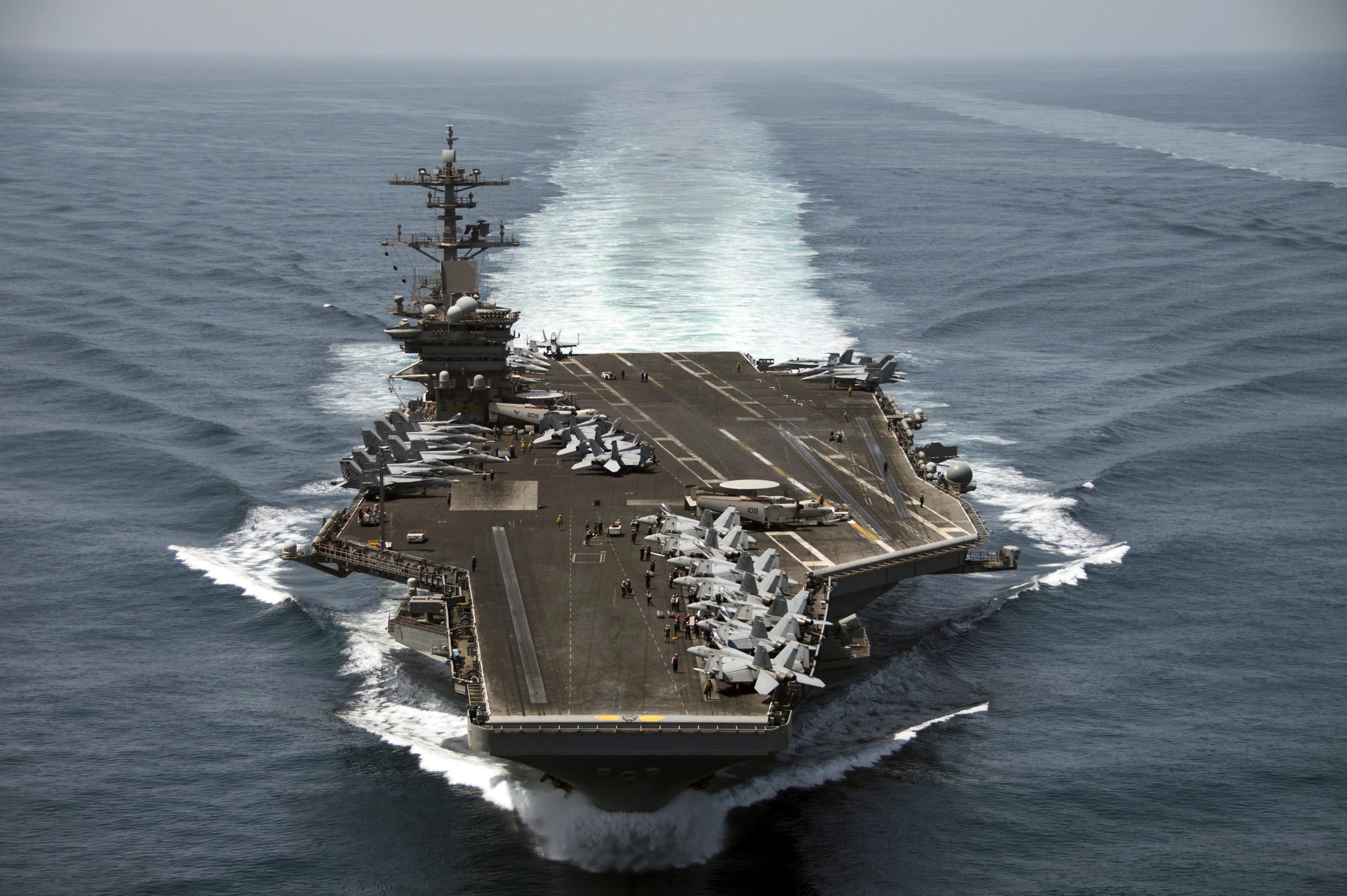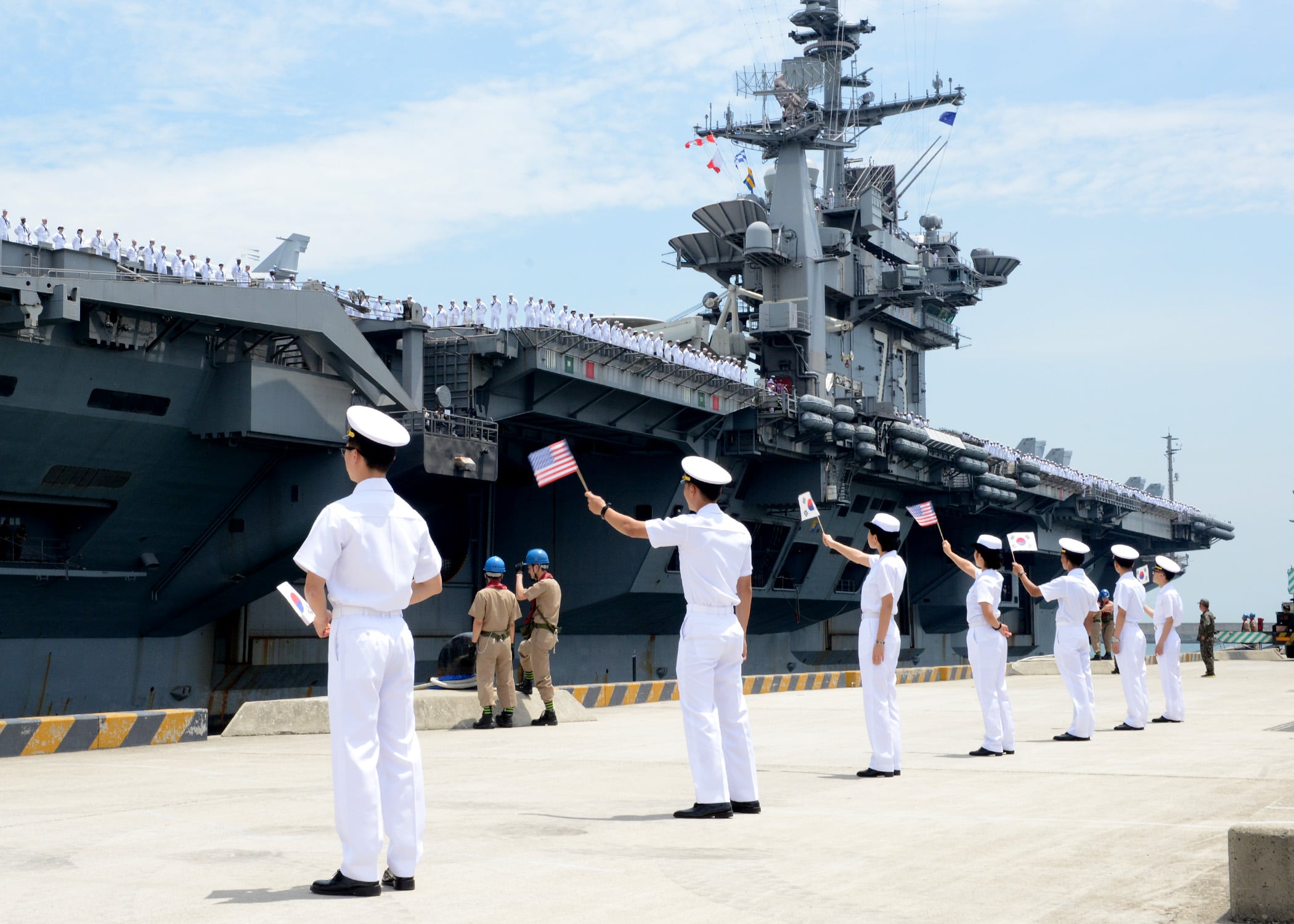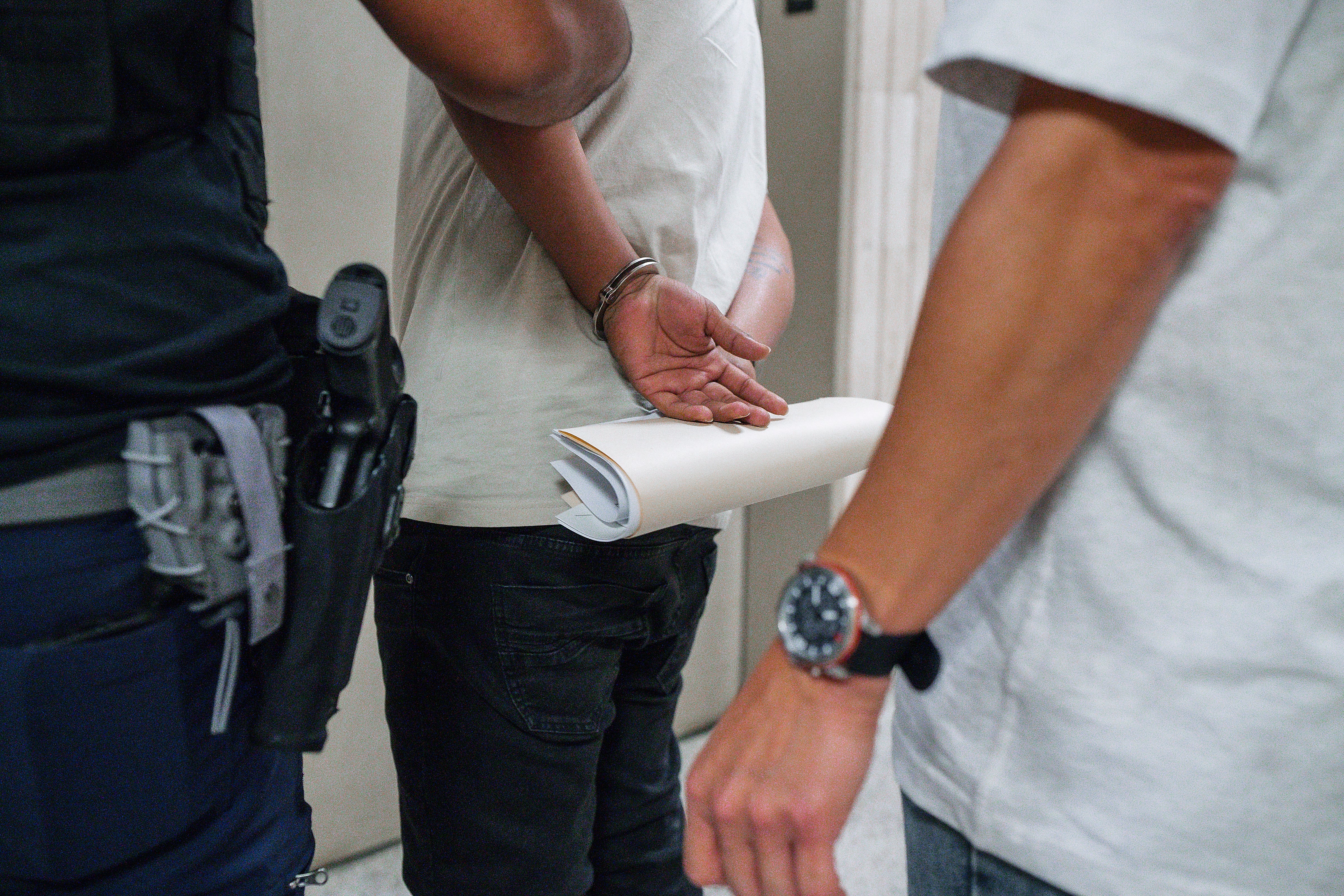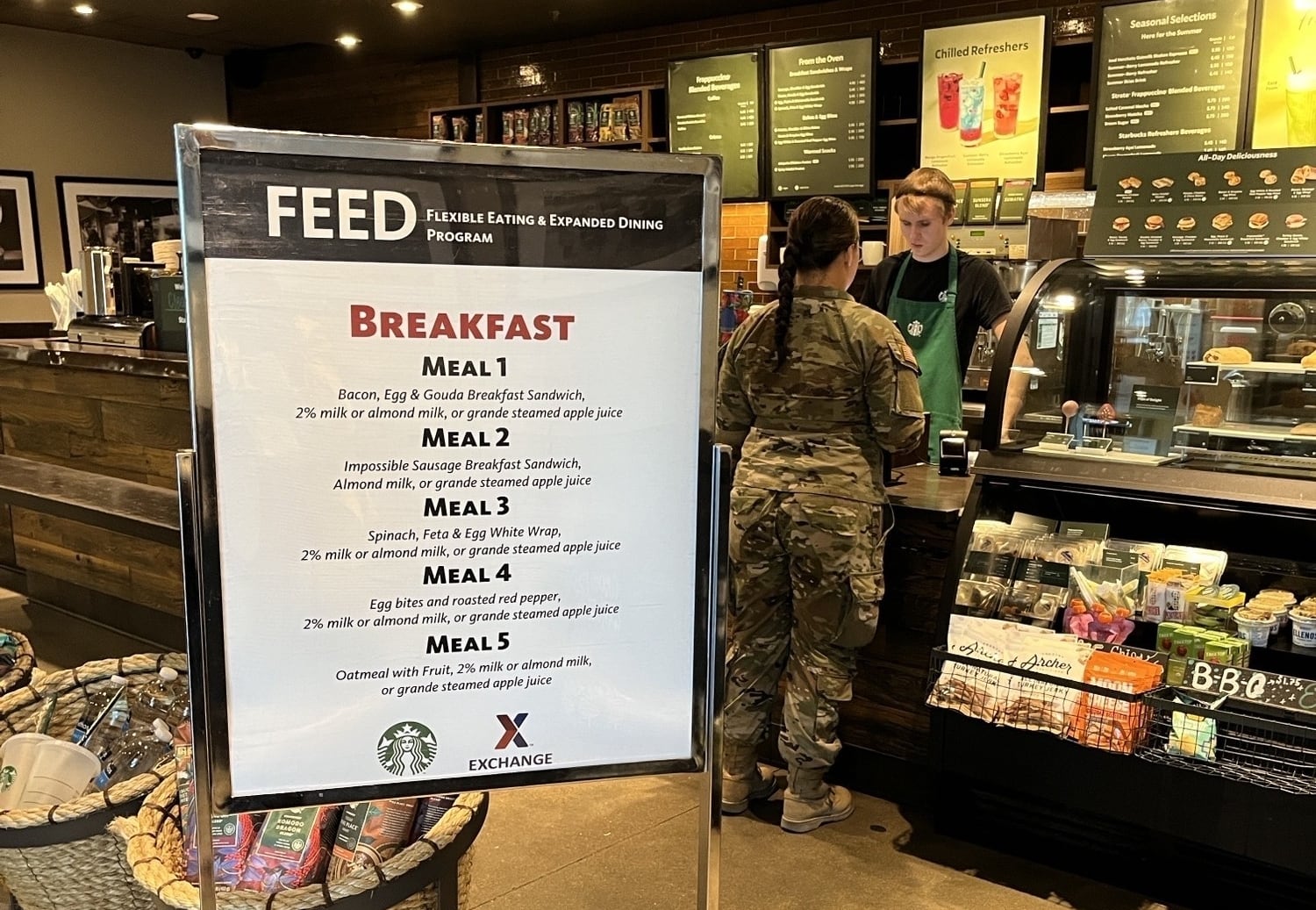There are plenty of plank owners, shellbacks, and old salts who have been part of a historic world cruise or war deployment. But only 1,407 sailors will have the bragging rights for distinction of serving aboard three flattopscarriers in one year.
Dubbed the "Three Presidents Crew," the team will start on the Ronald Reagan, transfer to the George Washington, and end up on the Theodore Roosevelt.
In all, roughly 9,000 sailors will be part of the unprecedented three-carrier swap. When the dust settles, each flattop will have a new home port on a different coast or in a different country. Through some creative crew swaps, more than half of the sailors will end up back at their original homeport — saving families from relocating and the Navy money.

The carrier Theodore Roosevelt, now operating in 5th Fleet, will return to a new home port in California.
Photo Credit: MC3 Anthony Hilkowski/Navy
The historic carrier swap deployment kicked off in March 11 when the carrier Theodore Roosevelt bid Virginia farewell after 28 years. The "Big Stick" is operating in 5th Fleet and afterward will head east through 7th Fleet on The carrier in mid-April relieved carrier Carl Vinson in the 5th Fleet area of responsibility. When that mission is complete, Roosevelt will pass through 7th and 3rd Fleet on its way to California. It will reach its new home — Naval Base Coronado, California — after an eight-month world cruise. Then roughly half the TR crew will head to Norfolk to man the George Washington, once it begins its mid-life refueling there.
The GW, now in the Timor Sea for Talisman Sabre 2015, left Japan on its last patrol in May as the carrier George Washington on May 18 departed Japan on its last Pacific patrol as the Navy's forward-deployed aircraft carrier, a position it's held seven years. That 23-year-old carrier is headed back to Virginia for its mid-life overhaul. On its way this summer, it will swap crews with the Ronald Reagan in San Diego. The carrier will conduct a crew swap with Ronald Reagan in San Diego later this summer.

After seven years forward deployed in Japan, the carrier George Washington is heading to Virginia for a mid-life overhaul. Here, Republic of Korea sailors wave South Korean and American flags as the GW arrives in Busan for a July 2014 port visit.
Photo Credit: MC1 Frank Andrews/Navy
By the latest count, As of early June, 1,666 GW crewmembers are of the George Washington crew were scheduled to cross deck to the Ronald Reagan, which will take GW's place as the forward-deployed flattop. and ride her back to Japan, where she will serve as the Navy's forward deployed carrier.
And then there's the "Three Presidents Crew," which will serve aboard all three carriers. That crew is on the Reagan in San Diego and will transfer to the GW and sail around South America to Meanwhile, the 1,407 members of the "Three Presidents Crew" will transfer from Reagan to GW, which will sail around South America to Newport News, Viginia, for the refueling and complex overhaul scheduled for 2017. Once they arrive, that crew will be flyown back to San Diego and become part of the TR crew. The crew will then return to San Diego via military airlift to man Roosevelt, which is scheduled to arrive in San Diego late this year. Roughly 1,520 members of Roosevelt's crew will fly back to Norfolk to man George Washington during its RCOH.
Getting ready
While hull swaps are not uncommon, they are not always uneventful. A notable example is the crew of cruiser Antietam, which found Cowpens in disrepair when they took over in 2013. Furthermore, the crew's certifications were earned on a modernized cruiser; Cowpens lacked Antietam's engineering upgrades and had an older version of Aegis with which the crew was unfamiliar.
Such errors will not take place this time, said according toReagan Command Master Chief Franklin "Spike" Call, the top enlisted on the Reagan. The transition plan is eight months in the making and includes input from "every department head and chief," Call said. Crews are studying ships' plans to coordinate strategies and overcome differences, and a handful of engineers are cross-decking ahead of time to help with the transition.

The carrier Ronald Reagan will become the Navy's forward-based carrier in the Pacific, homeported in Yokosuka, Japan.
Photo Credit: Lt. j.g. Joseph Pfaff/Navy
"They are the same class of ships, but built decades apart," Call said. Therefore, each carrier will conduct a tailored training period following the swap to enable each crew to familiarize itself with the ship's unique features and personality. When Reagan and GW begin their 10-day turnover in August, the Three Presidents Crew will go into a hardcore training lockdown — what Call likens to a mini-workup "to make sure we have everything down we need to get down as far as engineering, navigation, firefighting systems, all that stuff."
Some reactor personnel will remain with their ships once underway; the skippers and executive officers will stay with the hulls while the command master chiefs will remain with the crews.
While the Navy's goal is to keep the majority of the personnel in the same geographic area to support geographic stability and reduce costs for permanent change of station orders, sailors were asked for their preference, said Cmdr. Jeannie Groeneveld, spokeswomanperson for Naval Air Forces. Some chose to change. For example, roughly 800 members of the TR's Roosevelt's crew will remain with the ship when it arriveshomeports in San Diego. Crew slots that remain will be filled through regular assignments.
The switch is needed to keep a six-carrier presence in the Pacific, according to Pentagon officials. The GW is scheduled to be in the yard from 2017 to 2021. The TRRoosevelt completed its refueling complex overhaulRCOH in August 2013, and Reagan is more than a decade away from its mid-life refueling.is not scheduled to enter the yard for RCOH until 2027.
Carrier crews are not the only ones to benefit from the historic three-hull swap. The guided-missile cruiser Normandy is one of four ships that deployed with the TRoosevelt, but Normandy will join the carrier on the world cruise, and then transit the Panama Canal on its return to Norfolk.
TRoosevelt's deployment also made history as the first for the E-2D Advanced Hawkeye, which will be flown by Carrier Airborne Early Warning Squadron 125, the Tigertails. It also is the first deployment of Naval Integrated Fire Control-Counter Air, which networks the strike group's air, surface, and underwater assets to provide situational awareness unmatched by modern technologies. In tandem with the E-2D, this cooperative targeting allows commanders to identify and destroy threats from distances well beyond the radar horizon. And the deployment is the last in which a Helicopter Anti-Submarine Squadron will fly the SH-60F and H models. Upon return, the HS-11 Dragon Slayers will transition into a helicopter sea combat squadron and fly the MH-60S.
READOUT THAT CAN RUN WITH LOGO
Mass Communication Specialist 3rd Class David Frederick, who currently serves aboard Reagan, came up with a crew logo that includes a bust of each president and hull number CVN 220 — the sum of Reagan (CVN 76), Roosevelt (CVN 71) and Washington (CVN 73).





